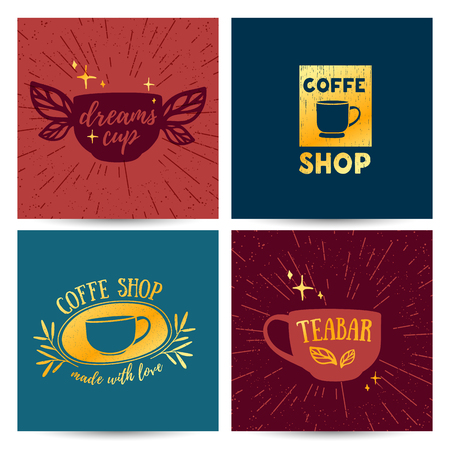1. Understanding the Moka Pot: A Classic Brewing Method
The Moka pot, often called a “stovetop espresso maker,” is a timeless coffee brewing device that originated in Italy in the 1930s. Designed by Alfonso Bialetti, it quickly became a staple in Italian homes and later gained popularity worldwide for its ability to produce strong, rich coffee without an expensive espresso machine.
How the Moka Pot Works
The Moka pot uses steam pressure to brew coffee. It consists of three main parts: the bottom chamber (for water), the middle funnel filter (for ground coffee), and the top chamber (where brewed coffee collects). As the water in the bottom heats up, steam builds pressure and forces hot water up through the coffee grounds and into the top chamber.
Basic Components of a Moka Pot
| Part | Description |
|---|---|
| Bottom Chamber | Holds water before brewing |
| Filter Basket | Holds ground coffee |
| Top Chamber | Catches brewed coffee |
An Icon of Italian Coffee Culture
The Moka pot is more than just a brewing device—its a symbol of daily life in Italy. Italians use it every morning for their “caffè,” preferring its bold flavor and rich aroma. This cultural tradition has inspired coffee lovers worldwide to adopt this simple yet effective method.
Moka Pots Growing Popularity in the U.S.
In recent years, American home brewers have embraced the Moka pot for its ability to produce espresso-like coffee at a fraction of the cost of traditional machines. It’s especially appealing to those who want a stronger cup than drip coffee but don’t want to invest in complex equipment. Plus, its compact, easy to use, and doesn’t require electricity—just your stovetop.
Why Americans Love the Moka Pot
| Reason | Description |
|---|---|
| Coffee Strength | Makes bold, concentrated brews similar to espresso |
| Simplicity | No need for electricity or fancy equipment |
| Affordability | A budget-friendly way to enjoy strong coffee at home |
| Aesthetic Appeal | Taps into vintage and minimalist kitchen trends |
The Moka pot offers an approachable way for U.S. consumers to explore deeper flavors in their daily cup. Understanding how it works and appreciating its heritage helps you choose better beans tailored for this brewing style—which we’ll dive into next.
2. What Makes a Good Coffee Bean for Moka Pot Brewing?
The Moka pot, also known as a stovetop espresso maker, is a favorite brewing method for many Americans who enjoy strong, bold coffee without investing in an expensive espresso machine. But to get the best flavor from your Moka pot, choosing the right coffee beans is key. Let’s break down what makes a great bean for this method, focusing on roast level, grind size, origin, and bean variety—all tailored to suit American flavor preferences.
Roast Level
Moka pots work best with medium to dark roasts. These roast levels bring out rich chocolatey and nutty notes that American coffee drinkers often love. Light roasts can taste too acidic or sour when brewed in a Moka pot due to the high pressure and temperature involved.
| Roast Level | Flavor Profile | Best For Moka Pot? |
|---|---|---|
| Light Roast | Bright, fruity, acidic | No – tends to taste sour in Moka pots |
| Medium Roast | Balanced, smooth, sweet | Yes – great balance of flavors |
| Dark Roast | Bold, smoky, chocolatey | Yes – ideal for strong Moka pot brews |
Grind Size
The grind size for a Moka pot should be finer than drip coffee but coarser than espresso—think of it as a “fine-medium” grind. Too fine and you’ll risk clogging the filter; too coarse and your brew will be weak and under-extracted.
Recommended Grind Texture:
- Similar to table salt or sand
- Avoid powdery espresso grind
- A consistent grind ensures even extraction and better flavor
Coffee Origin
The origin of your beans plays a big role in the final taste. American consumers often prefer smooth, chocolate-forward flavors from Latin American countries like Colombia or Brazil. These origins offer crowd-pleasing profiles that pair well with the strong brew of a Moka pot.
| Origin | Tasting Notes | Moka Pot Compatibility |
|---|---|---|
| Colombia | Smooth, caramel, nutty | Excellent choice for balanced flavor lovers |
| Ethiopia | Floral, fruity, bright acidity | Good if you like complex flavors; less traditional for U.S. palate |
| Brazil | Chocolatey, low acidity, full-bodied | Perfect for bold and creamy Moka brews |
| Sumatra (Indonesia) | Earthy, spicy, heavy body | Great for adventurous drinkers seeking depth and richness |
Bean Variety: Arabica vs Robusta
In the U.S., Arabica beans are preferred for their smoother and more complex flavors compared to Robusta’s stronger bitterness and higher caffeine content. That said, some blends may include a touch of Robusta to give your Moka pot brew extra crema and punch.
Key Differences:
| Coffee Type | Taste Profile | Caffeine Content | Moka Pot Use? |
|---|---|---|---|
| 100% Arabica | Smooth, mild acidity, nuanced flavors | Lower caffeine (~1.5%) | Yes – best choice for most U.S. consumers |
| Robusta or Blends (Arabica + Robusta) | Bitter, earthy, more intense body | Higher caffeine (~2.7%) | Yes – if you prefer bolder taste or espresso-like strength |
Selecting the right coffee bean characteristics—roast level, grind size, origin, and variety—can make all the difference in your daily Moka pot routine. With the right combo tailored to your taste preferences as an American coffee lover, youll enjoy richer and more satisfying cups every time.

3. Top Coffee Bean Recommendations Available in the U.S.
If youre brewing with a Moka pot, choosing the right coffee beans can make all the difference. In the U.S., theres no shortage of great options—whether youre shopping at your local coffee shop or browsing online. Below are some top-rated and popular coffee beans that work exceptionally well in a Moka pot, including both national brands and beloved local roasters.
⭐ National Brands You Can Trust
These widely available brands offer consistent quality and are easy to find across the U.S., making them excellent choices for Moka pot brewing:
| Brand | Coffee Name | Tasting Notes | Why It Works in a Moka Pot |
|---|---|---|---|
| Lavazza | Espresso Italiano | Smooth, rich, with hints of chocolate | Mild acidity and medium roast perfect for stovetop espresso makers |
| Illy | Classico Medium Roast | Balanced, caramel, floral notes | Finely ground and ideal for consistent extraction in Moka pots |
| Kicking Horse Coffee | 454 Horse Power (Dark Roast) | Heavy body, earthy, smoky | The bold flavor stands up well to the strong brew from a Moka pot |
☕ Local & Artisanal Roasters Worth Trying
If you’re looking to support smaller businesses or want something more unique, these local U.S. roasters have fantastic options for Moka pot lovers:
| Roaster | Coffee Name | Tasting Notes | Location |
|---|---|---|---|
| Stumptown Coffee Roasters | Hair Bender Blend | Citrus zest, dark chocolate, caramel | Portland, OR |
| Petes Coffee | Major Dickason’s Blend | Smooth, full-bodied, spicy notes | Berkley, CA (Available nationwide) |
| Tandem Coffee Roasters | The Time and Temperature Blend | Berries, brown sugar, cocoa finish | Portland, ME |
TIPS FOR BUYING THE RIGHT BEANS:
- Select medium to dark roasts: These typically extract better under the pressure of a Moka pot.
- Avoid overly oily beans: Too much oil can clog your filter or affect flavor clarity.
- Brew fresh: Buy whole beans and grind just before brewing for best results.
No matter your taste preference—from smooth and balanced to bold and intense—theres a perfect bean out there for your Moka pot. Try experimenting with different roasts and origins to find your favorite cup.
4. Roast Levels and Flavor Profiles: Matching Taste to Bean
When it comes to brewing coffee with a Moka pot, the roast level of your beans plays a big role in how your cup will taste. Whether you prefer something bright and fruity or rich and bold, understanding roast levels can help you find the perfect match for your palate. Here’s a breakdown of the main roast types and how they impact flavor when used with a Moka pot.
Understanding Roast Levels
Coffee beans are typically categorized into three main roast levels: light, medium, and dark. Each roast brings out different flavors in the bean, and when brewed in a Moka pot—a method that produces strong, espresso-like coffee—those differences become even more noticeable.
Roast Level Comparison
| Roast Level | Flavor Profile | Best For |
|---|---|---|
| Light Roast | Bright, acidic, fruity notes; preserves original bean characteristics | U.S. consumers who enjoy lighter body and complex flavors |
| Medium Roast | Balanced flavor with mild acidity and sweeter tones like caramel or nuts | Great all-around choice for most Moka pot users in the U.S. |
| Dark Roast | Bold, smoky, chocolatey flavors with low acidity; more bitterness | Coffee lovers who prefer strong, intense brews similar to traditional Italian-style coffee |
How Roast Impacts Moka Pot Brewing
The Moka pot’s pressure-based extraction enhances certain flavor qualities depending on the roast:
- Light roasts: Can taste overly acidic or sharp if over-extracted in a Moka pot. Use a slightly coarser grind and lower heat for better results.
- Medium roasts: Often ideal for Moka pots—balanced enough to bring out sweetness without too much bitterness.
- Dark roasts: Work well due to their robust profile; however, be cautious of bitterness if brewed too hot or too long.
Tips for Choosing Based on Your Taste Preferences
If youre new to brewing with a Moka pot, here are some quick tips to guide your bean selection based on common American taste preferences:
- If you like pour-over or drip coffee with citrusy or floral notes, try a light roast from Ethiopia or Kenya.
- If youre into balanced coffees like those from Central America (e.g., Guatemala or Colombia), a medium roast is your go-to.
- If youre a fan of strong diner-style coffee or dark espresso shots, go for dark roasts from Sumatra or blends labeled “espresso roast.”
Choosing the right roast level isn’t just about strength—it’s about finding what flavors make your mornings better. Whether you enjoy sipping slowly or need a bold jolt to start the day, there’s a perfect roast out there for your Moka pot experience.
5. Brewing Tips: Getting the Most Out of Your Moka Pot and Beans
Making great coffee with a Moka pot at home doesnt have to be complicated. With the right beans and a few simple techniques, you can brew rich, flavorful coffee that rivals your local café. Here are some practical tips tailored for American home kitchens.
Water Temperature Matters
Start with hot water, around 195°F to 205°F. Using pre-heated water shortens brewing time and helps prevent bitterness caused by over-extraction. Most American households can heat water using an electric kettle with a temperature setting or a stovetop kettle and a thermometer.
The Right Grind Size
For Moka pots, your grind should be finer than drip coffee but coarser than espresso. If its too fine, you risk clogging the filter; too coarse, and youll get weak, under-extracted coffee. Many U.S. grocery stores sell pre-ground coffee labeled “espresso grind,” which usually works well for Moka pots.
| Grind Type | Description | Moka Pot Suitability |
|---|---|---|
| Coarse (like sea salt) | Used for French press | Too weak for Moka pot |
| Medium (like sand) | Used for drip machines | Slightly under-extracted in Moka pot |
| Fine (like table salt) | Used for espresso | Ideal for Moka pot |
| Extra Fine (like powder) | Used for Turkish coffee | May clog Moka pot filter |
Packing the Coffee Grounds
You don’t need to tamp down the grounds like you would for an espresso machine. Just fill the Moka pot basket to the top and level it off with your finger—no pressing needed. This allows steam pressure to flow evenly through the grounds.
Brewing on American Stovetops
Moka pots work on both gas and electric stovetops commonly found in U.S. homes. For electric coil stoves, use medium heat and place the pot directly over the burner. For gas stoves, make sure the flame doesn’t extend beyond the bottom of the pot.
Moka Pot Safety Tips
- Never pack the coffee too tightly—it can block pressure release.
- Avoid overfilling with water; stop just below the safety valve.
- If steam starts escaping from places other than the spout, turn off the heat immediately.
Troubleshooting Common Issues
| Issue | Possible Cause | Fix |
|---|---|---|
| Coffee tastes bitter | Brewed too long or water too hot | Use pre-heated water and reduce heat level |
| Coffee is weak or sour | Grind is too coarse or water not hot enough | Select a finer grind and use hotter water |
| No coffee comes out | Packed too tight or clogged filter | Dismantle, clean parts, and avoid tamping grounds |
A little attention to detail goes a long way when brewing with a Moka pot. By tuning in to grind size, water temperature, and stovetop control, you’ll get consistently delicious results right from your kitchen in the U.S.


